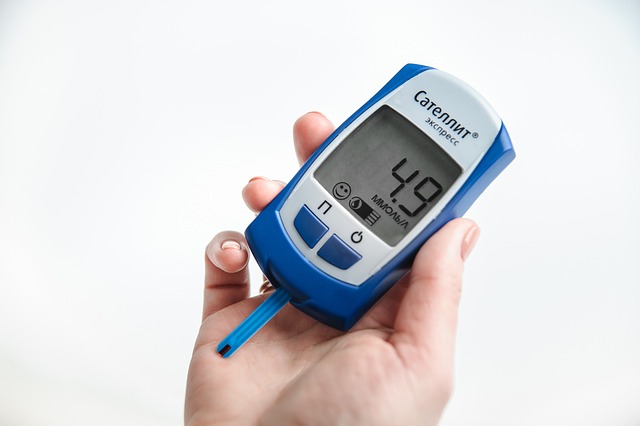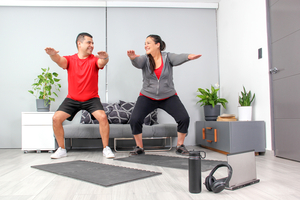Hypoglycemia is a condition of lower-than-normal blood sugar. It is most common among people with diabetes.
Although diabetes is a condition with high blood sugar and the goal of diabetes treatment is to lower blood sugar, sometimes blood sugar can dip too low and cause hypoglycemia.
It is important to be able to recognize hypoglycemia and treat it, as well as how to lower your risk for it through good self-management and healthy living. Here is more information on hypoglycemia, and Lark Diabetes Care can help you put it into practice on a daily basis.
Definition of Hypoglycemia
Hypoglycemia is a condition with lower-than-normal blood sugar or blood glucose. There are two levels defined by your blood glucose level.
Level 1 Hypoglycemia: ≥ 54 to < 70 mg/dl
Level 2 Hypoglycemia: < 54 mg/dl
Take steps to treat hypoglycemia as soon as you discover it to prevent it from worsening and causing more serious problems.
Possible Causes of Hypoglycemia
Certain kinds of diabetes medications can cause hypoglycemia as a side effect. These include sulfonylureas or meglitinides. Taking too much insulin compared to the amount of carbohydrates and other food you have can also lead to hypoglycemia.
These are some other likely causes of hypoglycemia.
- Skipping meals or eating a lower than normal amount of carbohydrates, especially when you are on insulin.
- Delaying meals or snacks relative to when you usually have them.
- Increasing physical activity levels, especially if you take insulin.
- Drinking alcohol, especially in excess and/or on an empty stomach.
Symptoms
These are some of the common symptoms of hypoglycemia.
- Shakiness
- Sweatiness or rapid heart rate
- Hunger
- Headache
- Fatigue
- Dizziness
- Lack of coordination
- Confusion
- Anxiety
- Weakness
- Irregular heart rate
You could lose consciousness if blood sugar dips too low.
Treatment for Level 1 Hypoglycemia
If you have Level 1 hypoglycemia (blood glucose under 70 mg/dl but at least 54 mg/dl), immediately take 15 grams of fast-acting carbohydrates. You can take glucose gel or tablets or use other high-sugar foods, such as fruit juice, dried fruit, syrup, honey, or candy. Choose the amount that has 15 grams of sugar, or about 60 calories.
Then take your blood sugar level again in 15 minutes and repeat until your blood sugar level is over 70 mg/dl.
Aim to get your fast-acting carbohydrates from foods with as little fat as possible, since fat slows digestion and delays your ability to raise blood sugar levels. You might choose:
- Licorice or marshmallows, but not chocolate.
- Jelly without peanut butter.
- Frozen juice pops, but not ice cream.
Avoid eating protein with your fast-acting carbohydrates because protein has the opposite effect that you want. It increases your insulin response, which lowers blood sugar.
If you take acarbose or miglitol (alpha-glucosidase inhibitors) along with diabetes medications that cause hypoglycemia, such as sulfonylureas or meglitinides (repaglinide, nateglinide), stick to glucose gel or tablets if you get hypoglycemia.
The American Diabetes Association recommends that if you are unable to measure your blood sugar but you have signs of hypoglycemia, you should act as though you have hypoglycemia. That is, have some fast-acting carbohydrates and monitor how you feel.
Treatment for Level 2 Hypoglycemia
Level 2 hypoglycemia can be dangerous and it needs to be treated quickly.
When blood glucose falls below 54 mg/dl, you are at higher risk for losing consciousness or having a seizure. At this point, you may not be physically able to consume fast-acting carbohydrates. Instead, you may need a glucagon injection.
With blood glucose so low, you may be too weak or confused to make any decisions or administer your own glucagon. You may need to depend on someone else to recognize that you have hypoglycemia or to give you the injection. For that reason, you should:
- Wear an ID bracelet that says that you have diabetes.
- Tell people whom you know that you have diabetes. This can include friends, family members, coworkers, and other people who are around you regularly.
- Ask these people if they would be willing to let you teach them how to administer a glucagon injection if needed.
Hypoglycemia and Hyperglycemia
Since hypoglycemia is lower-than-normal blood sugar, and hyperglycemia is higher-than-normal blood sugar, you might expect that you would tend towards having one or the other, not both.
It turns out that this is not the case. In fact, people who have more episodes of hypoglycemia are more likely to have hyperglycemia as measured by higher A1C values.
That means it is as important to prevent hypoglycemia as it is to prevent frequent hyperglycemia. Be especially watchful in the weeks following a hypoglycemic episode to prevent another one and lower the chances of your A1C creeping up.
Be Prepared to Prevent and Treat
You can take steps to prevent hypoglycemia and be ready to treat it if it does happen. Know the common causes and address them if they may be relevant to you. For example…
- Have meals and snacks on a schedule. Do not postpone them. Carry snacks with you in case you get held up at work or you get delayed for other reasons.
- Do not skip regular meals or snacks even if you are trying to lose weight.
- Be consistent with your carbohydrate intake.
- Check blood sugar before and after exercising, and eat an extra snack or adjust medications if needed.
- Have a meal or snack when you drink alcohol and monitor blood glucose before, during, and after drinking, including through the night until the next morning.
Diabetic hypoglycemia can happen despite efforts at prevention. That means you need to be prepared. Carry fast-acting carbs and glucagon with you.
Since others may need to help you recognize hypoglycemia and administer glucagon, let them know how to do so. Be sure to wear a bracelet that identifies you as having diabetes so people can help if needed.
Hypoglycemia is a serious threat for people with diabetes, but you can take steps to lower your risk with better daily diabetes management as well as learning how to prevent, recognize, and treat it.
Lark Diabetes can help you with your smart diabetes choices as you eat healthy, get active, monitor your blood glucose and medications, and learn a lot throughout your journey.











.webp)







